Back in 2018, Kevin Smith talked to us about the work of Weta Digital on Mortal Engines. He went on to work on Godzilla vs. Kong. Today, he tells us about his work on Zack Snyder’s Justice League.
Simeon Duncombe has been working in visual effects for over 20 years. He joined Weta Digital in 2003 and has worked on a many shows including Avatar, The Hobbit trilogy, Batman v Superman: Dawn of Justice and Avengers: Endgame.
Jens Maartensson started his career in visual effects over 15 years ago. He has worked at numerous studios such as DNEG and ILM before joining Weta Digital in 2016. He has worked on films such as Warcraft, Guardians of the Galaxy Vol. 2, Alita: Battle Angel and Gemini Man.
What was your feeling to be back on Justice League?
Simeon Duncombe (SD) // I was hesitant at first, but it’s not often you get a second chance at something. My first question was, “Is DJ involved?”. Thankfully he was, so I immediately got excited about the idea. I’ve worked with DJ twice before, and loved it. He has such a great relationship with Zack, which helps the process incredibly. Also, being aware of plenty of great moments that were cut from the theatrical version, I got hugely excited about the idea of the world finally getting to see this work.
How was the collaboration with director Zack Snyder and VFX Supervisor John ‘D.J.’ DesJardin?
Kevin Smith (KS) // We didn’t talk too much with Zack directly, with so many facilities on the project it’s difficult for the director to be involved at the level. We had our reviews with DJ, and that was awesome. I actually rolled on to ZSJL immediately from Godzilla vs Kong, which also had DJ as a client supervisor, so it was great to just carry on that relationship from one project to the next. DJ and Tamara and the whole team client side are a dream to work with. It was surprisingly chill for as challenging as this project was.
SD // Amazing, as always. They are great collaborators and always responsive to pushing ideas further. Given the huge volume of work they both oversee, there was a feeling that they’re always comfortable with us just ‘getting on with it’ and taking ownership of the shots we’re involved in. This is hugely rewarding, for everyone involved.
Can you tell us what Weta Digital did on this show?
KS // We did about 800 shots all told. About half was redoing shots from the 2017 version and updating with the new, but really original, Steppenwolf design. The other half of the shots were all new sequences that had been left out of the 2017 version and are now back in the film. The majority of these shots were third act battle scenes that take place inside the cooling tower. We also lead on the lookdev for the original Steppenwolf design.
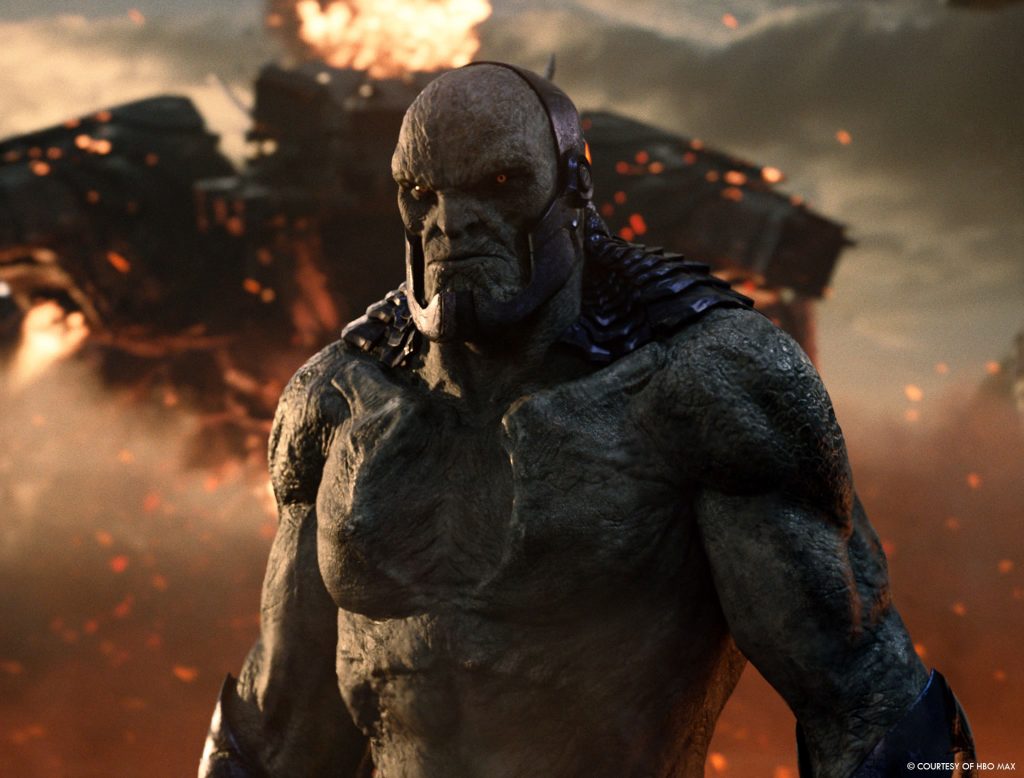
It’s really unique to be able to work again on the same shots and improve them. What did you do differently thanks to your experience on the 2017 version?
SD // With the design of Steppenwolf returning to his original concept from Zack, we took the opportunity to breathe new life into this character. Depending on the flexibility allowed in any given shot (technically or creatively), we would always take the opportunity to dial up the action and shape Steppenwolf into the more formidable foe he was meant to be. We also took advantage of the new R rating and dialled up the violence whenever the opportunity presented itself.
After 4 years, your pipeline has changed. How did you adjust or rebuild the assets for it?
KS // Ordinarily, when you go to Paul Harling, our data manager, it’s because you need to get a shot for publicity, or a comp, or some data to do a shot breakdown or you need something for a presentation. It’s usually not a lot of data and you just have to wait for the tape robot to get to your job in the queue. Data pretty much goes one-way, and it’s not back online but that’s ok as the data we need to come online is generally quite small. So, on ZSJL, we had to go to Paul, hat in hand, and ask to get Justice League brought back online. Of course, the initial response was “oh that’s cool, what shot do you need” to which our response was “no, the whole thing.” After the initial shock wore off, we got it queued up and let the restore system do its thing, which is a nice way to say “then we waited a long time”. It was an enormous amount of data and at first, we weren’t even really sure where we were going to put it.
Once it was back online the real job began. We’re constantly striving for improvement in every aspect of what we do and sometimes the pace of progress is relentless. The inside joke at Weta is, if your show is long enough, shots that you’ve finaled at the beginning of the show probably won’t work in the pipeline at the end of the show. A show you did four years ago may as well have been a hundred. There was probably not a single part of the pipeline that was unchanged from 2017. The original Justice League was one of, if not the, last show where lighting was done in Maya before we switched to Katana. The supes and leads did a heroic job getting lighting setups, shaders, rigs, puppets, Nuke plugins and all the other little bits and pieces translated or updated to the newest tools.
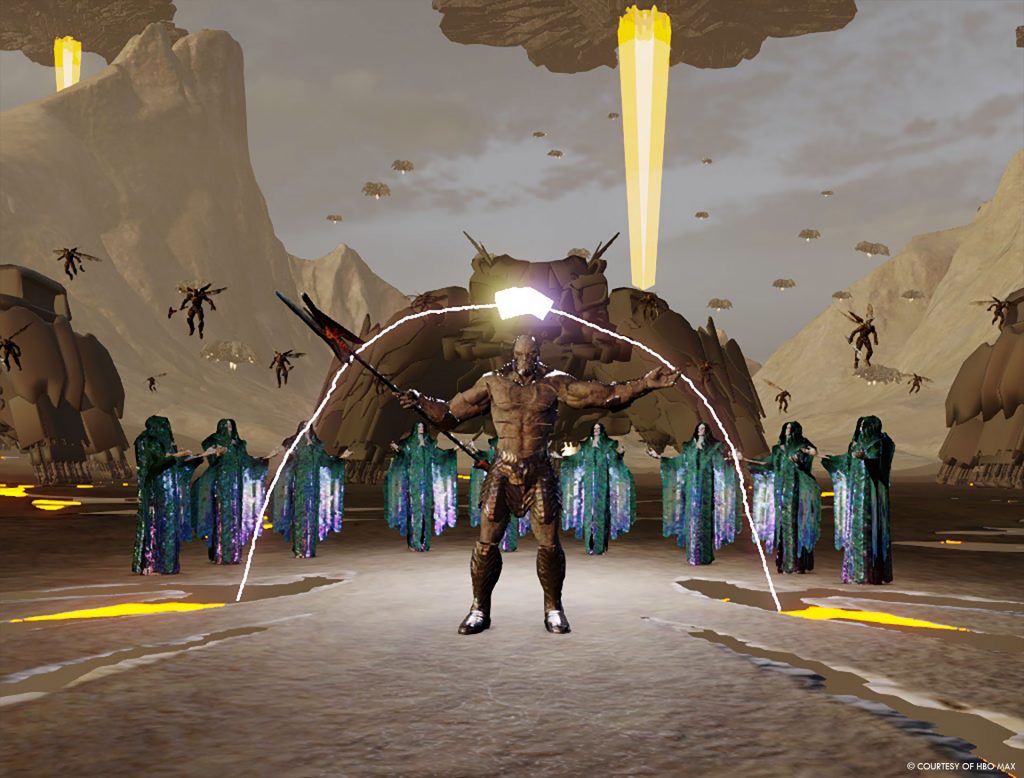
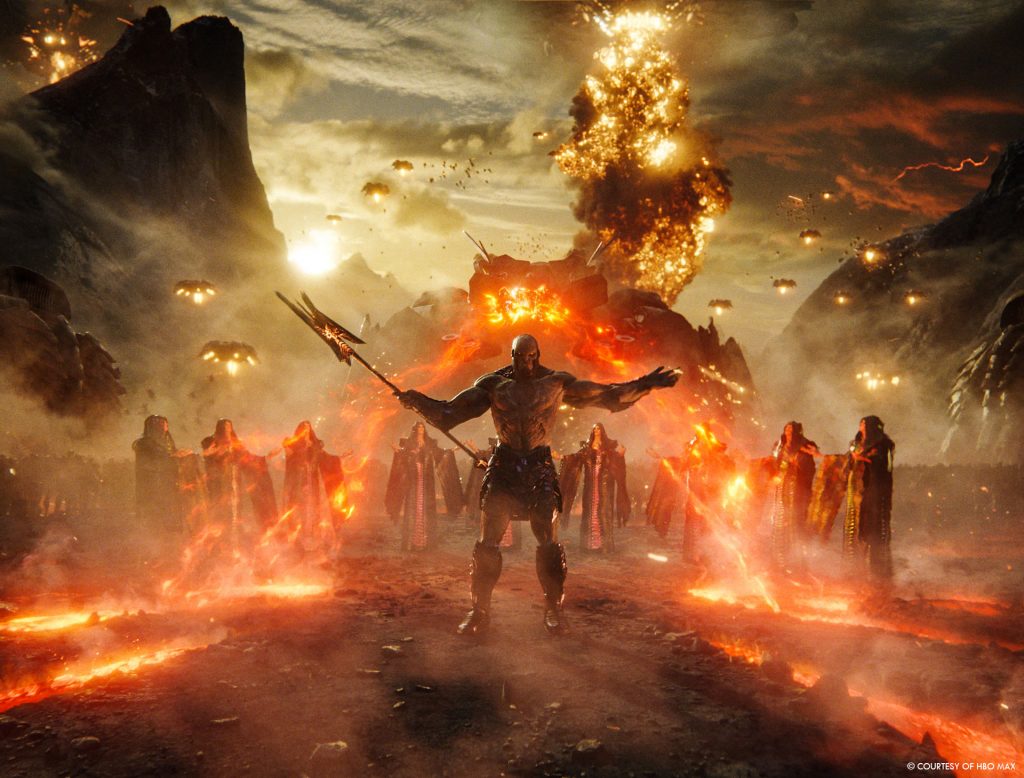
Which asset was the most challenging to enhance or rebuild?
KS // Steppenwolf was fairly challenging on a number of fronts. Modeling, FX, Lighting, Animation. Not only the redesign process but he’s a pretty complex character. He also had to be engineered to carry a more emotional performance which requires a lot subtle work from many teams.
How does the 1.33 aspect affects your work?
SD // This changed our approach to framing all our new shots. In the theatrical version, we were mostly framing on thirds, for this aspect, we shifted to mostly centre framing. Having the extra head room was great for characters like Steppenwolf and Darkseid too. It really helped give those guys some more stature in frame.
How did you manage the short schedule and the amount of work?
KS // With any show, no matter how big, or small, no matter how short or long the schedule is it always comes down to planning. Of course you need to hit your deliveries and deadlines but without a good plan you’re dead. It was definitely a challenging schedule for the amount of work required but we had an amazing production crew that kept us on track. Our VFX producer Kevin Sherwood and his team kept us on schedule and pointing in the right direction.
How did you organize the work between you?
KS // VFX Supervisor Anders Langlands was responsible for The Themyscira Attack and the History Lesson and I managed everything inside Steppenwolf’s fortress in the cooling tower, including the final third act battle.
Can you explain in detail about the creation of Steppenwolf and the new villain Darkseid?
SD // As always, it’s finding the performance that fits the design. Steppenwolf has huge shoulders, giant horns and small hoof-like feet – all covered in mechanical ‘mood armour’. These designs made certain moments are little trickier to work, but it forces you to think outside the box and come up with more interesting approaches.
We drew from our experience with Thanos on how to approach Darkseid – both technically and creatively. Despite them being from very different universes, you can still draw some useful parallels. Thankfully a lot of design iteration and character development had already happened during the original production on the theatrical cut. So we were able to pick up from where we left off and refine his performance as needed in any particular shot.
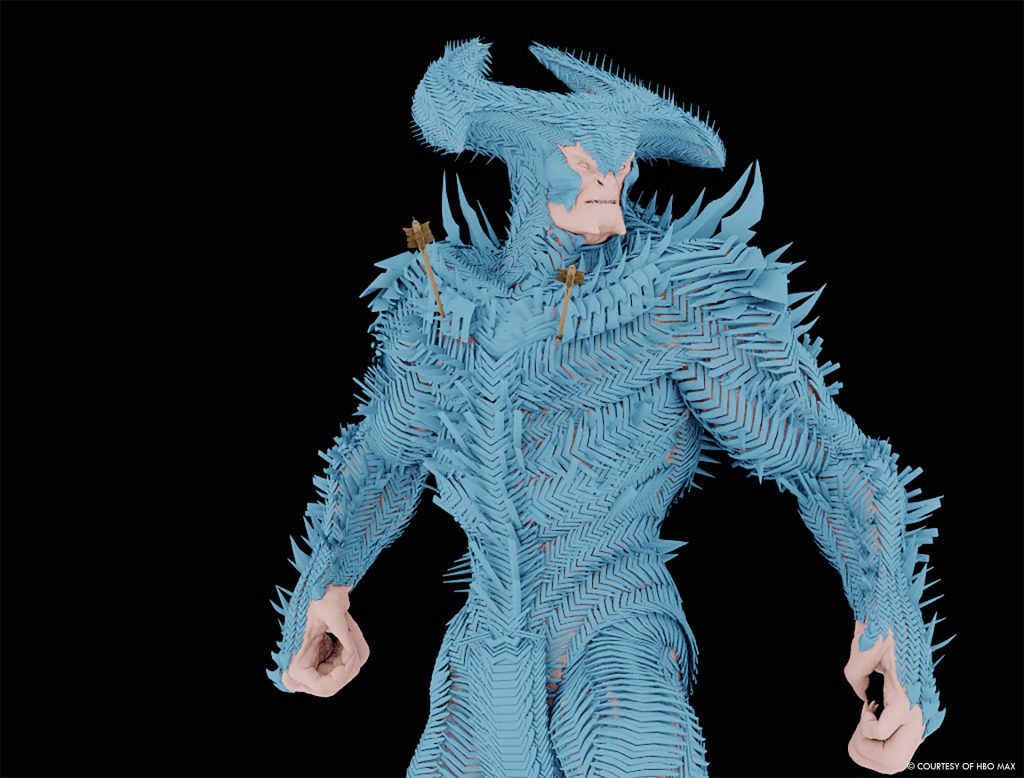
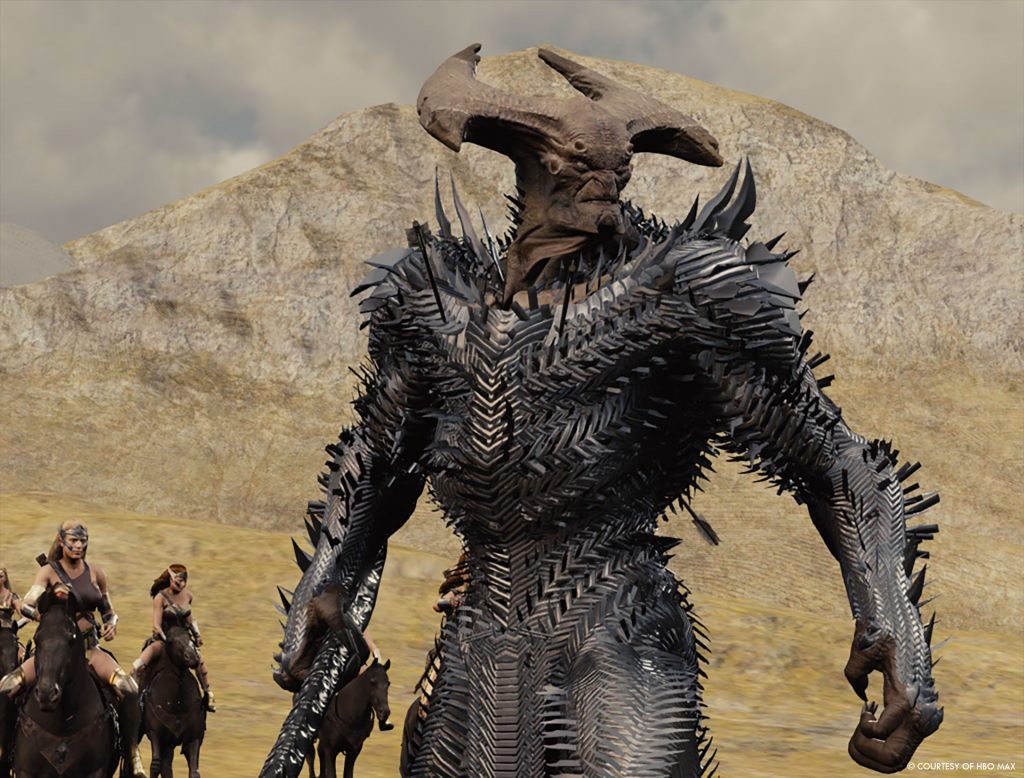
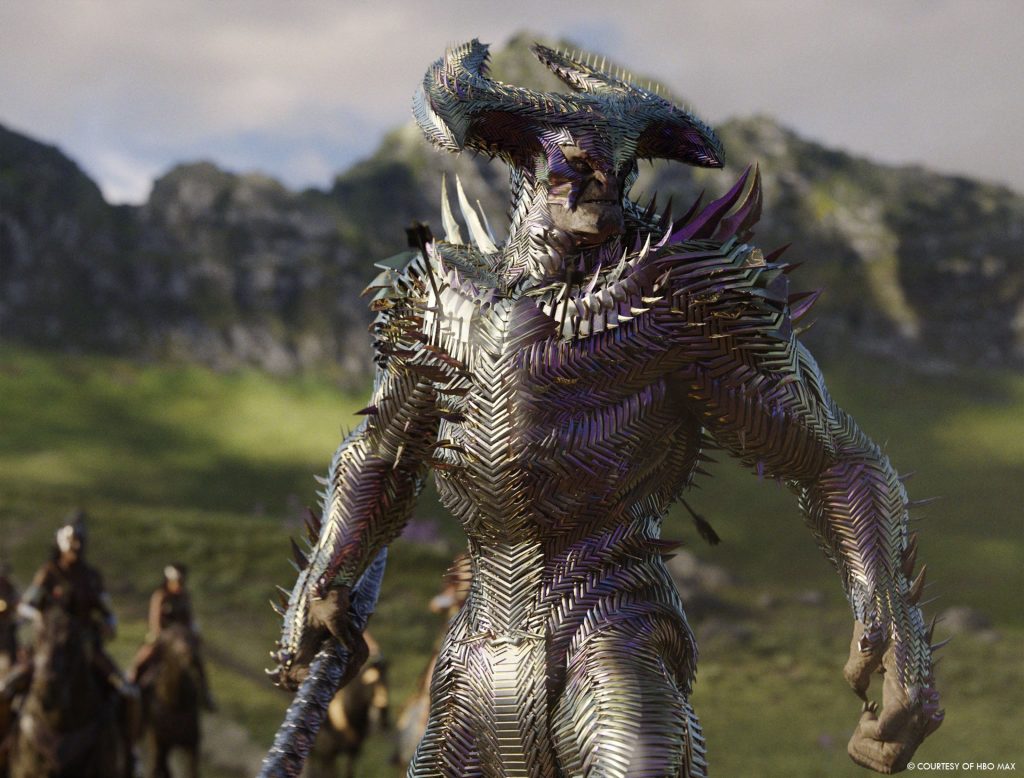
Did you used procedural tools for the armor of Steppenwolf?
Jens Maartensson (JM) // Yes we did use a procedural setup in Houdini, but no simulation was required. This was also one of the shows that we used a new context in Houdini called PDG to run multiple shots at the same time.
Can you tell us more about the animations of Steppenwolf armor?
JM // The creative brief was to make the armor look like a part of Steppenwolf, so it would amplify his feelings. The procedural setup was developed by Prema Paetsch early in the project, as it was needed for the first trailer. DJ and Zack loved it, so the second part of the setup was automating it because it had to be run in over 100 shots. We used PDG inside of Houdini to automate the setup with just a few parameters exposed to the FX TD, so any TD could pick it up and run it.
Can you tell us more about the performance capture and the face animations?
SD // We completed about 11 days of capture for this film, with the bulk of the work going to Steppenwolf. We relied heavily on the experience of Allan Henry and Isaac Hamon, two guys responsible for many of our CG character performances here at Weta. Allan Henry was the foundation of Steppenwolf’s performance during his conversation with Desaad and Darkseid in the Nuclear Silo. Allan nailed all the lines and gave us a great performance to help marry with the original voice acting from Ciaran Hinds.
Isaac and Allen were also responsible for the fight choreography of the exciting moments in the third act battle between all our heroes. This really helped keep a cohesive and well-paced fight for everyone to be engaged in. Building on these performances, were our amazing character and facial animators. The extra details provided by everyone on these teams, took our actions from cool, to wow.
The facial team in particular, had an incredible amount of dialogue to get through, which in the case of this show was all manually key-framed. We didn’t have facial tracking data this time, so we relied heavily on their experience. Our facial Lead, Jack Tema was instrumental in getting the final facial performances looking the way they did. He is hugely experienced and I was incredibly grateful to have his help on this project.
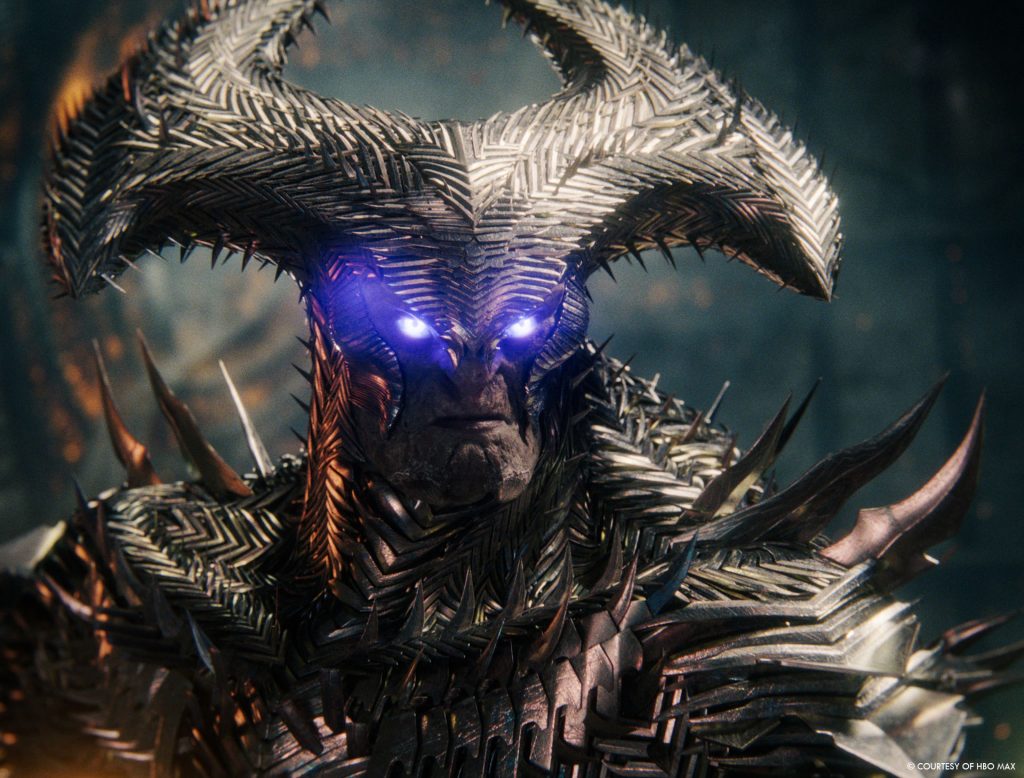
As every movie by Zack Snyder, there are tons of slow-motion shots. How does that affect your work?
KS // In-camera slow-mo is easy, there’s not too much different there than doing a regular shot. Speed ramps are harder, the FX guys don’t like it very much when you start changing the FPS during the shot. Speed ramps and re-speeds added-in later can be very difficult. In addition to all other challenges retiming the plates is extremely challenging in comp. Odd speedups or slowdowns can often mean many hours of intensive, by-hand, plate reconstruction. The great thing about Zack is he knows what he wants and shoots it that way.
Is there something specific that gives you some really short nights?
SD // Facing the backdrop of potential Covid lockdowns, potentially taking away our ability to grab performance capture was a nerve wracking time.
What is your favorite shot or sequence?
SD // The ‘History Lesson’ has always been a favourite of mine. Almost every shot is some exciting, big action and there are so many great elements to build the shots with. From Spaceships in the BG, to powerful Gods exchanging blows with Darkseid in the FG.
What is your best memory on this show?
SD // Bringing some depth to Steppenwolf’s character through his scenes with Desaad and Darkseid. It was hugely satisfying seeing him come to life from all of the amazing work from the team.
How long have you worked on this show?
KS // I started in April 2020.
What’s the VFX shots count?
KS // About 800 shots.
What was the size of your team?
SD // Across Animation, Facial, Motion Edit and Crowds, it was approximately 50 artists. There were near 500 across the entire show.
What is your next project?
KS // The project is not public at this time.
A big thanks for your time.
WANT TO KNOW MORE?
John “DJ” DesJardin: My interview of Overall VFX Supervisor John “DJ” DesJardin about Zack Snyder’s Justice League.
Weta Digital: Dedicated page about Zack Snyder’s Justice League on Weta Digital website.
HBO Max: You can watch Zack Snyder’s Justice League on HBO Max now.
© Vincent Frei – The Art of VFX – 2021




